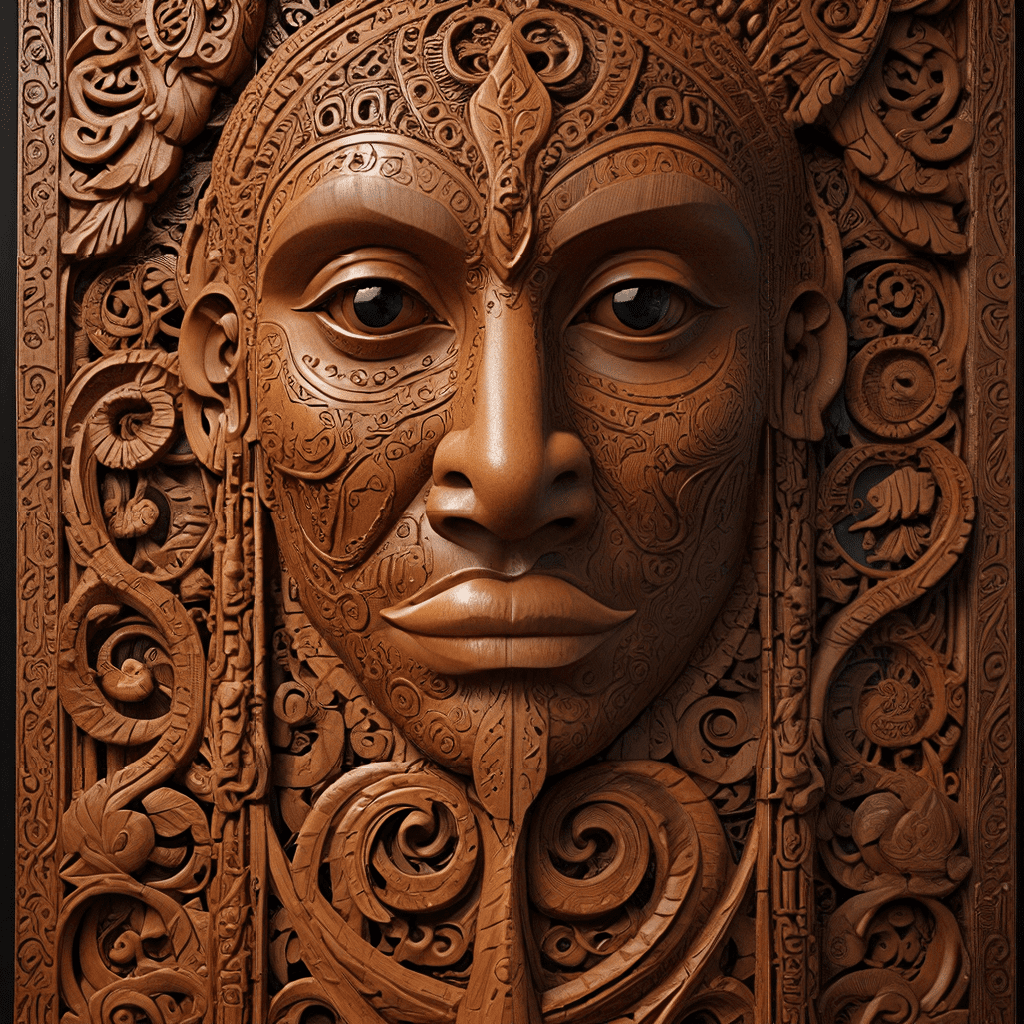The Mythical Rivers in Hindu Mythology
Hindu mythology is replete with tales of sacred rivers that hold immense religious and cultural significance. These celestial waterways embody divine powers, witness cosmic events, and serve as pilgrimage sites for millions of devotees. Here's an exploration of the top five mythical rivers in Hindu mythology:
1. Ganges
Significance and Symbolism
The Ganges, revered as the River of Life, is the most sacred river in Hinduism. It is believed to have descended from heaven to cleanse the sins of humanity and bestow blessings upon those who bathe in its purifying waters. The Ganges represents the universal mother, Ganga Mata, who nourishes and supports all life.
Origins and Descent
According to legend, the Ganges originates from the matted locks of Lord Shiva, the god of destruction and transformation. It descended to earth through the intercession of King Bhagiratha, who performed severe austerities to bring the river to the mortal world. The Ganges is said to flow through three worlds: heaven, earth, and the underworld.
The Four Branches
The Ganges is divided into four main branches: the Bhagirathi, the Yamuna, the Alaknanda, and the Mandakini. Each branch has its own mythological significance. The Bhagirathi, the main branch, represents the holiness and purity of the Ganges. The Yamuna, a tributary, symbolizes the union of the two rivers and is considered equally sacred. The Alaknanda is believed to originate from the abode of Lord Vishnu, while the Mandakini is associated with the goddess Parvati.
Pilgrimage Sites
Along the banks of the Ganges are numerous pilgrimage sites, including Varanasi, Haridwar, Rishikesh, Prayagraj, and Gangotri. These sites draw millions of devotees who come to bathe in the holy river, offer prayers, and seek blessings from the divine mother.
6. Krishna
The River of Lord Krishna
The Krishna River, also known as Dakshin Ganga (Southern Ganges), holds immense religious significance in Hinduism. It is believed to have originated from the tears of Lord Krishna, the eighth avatar of Vishnu. The river flows through the states of Maharashtra, Karnataka, Telangana, and Andhra Pradesh.
Geographical Features and Origin
The Krishna River rises from the Western Ghats in Mahabaleshwar, Maharashtra. It flows for approximately 1,400 kilometers before merging with the Bay of Bengal. The river basin is known for its fertile lands and supports a significant population in the region.
Religious Significance and Pilgrimage
The Krishna River is considered sacred and is associated with Lord Krishna throughout his life. It is believed that bathing in the river washes away sins and brings good fortune. Along its banks are several pilgrimage sites, including Sangli, Kolhapur, and Srisailam.
The Holi Festival and Bathing Rituals
The Krishna River is particularly celebrated during the Holi festival, which marks the arrival of spring. Devotees gather on the banks of the river to bathe in its waters and offer prayers to Lord Krishna. This ritual is believed to purify the body and soul and bring blessings from the divine.
7. Kaveri
The Southern River
The Kaveri River is revered as the Southern Ganges and is considered sacred in South India. It originates from the Western Ghats in Kodagu, Karnataka, and flows through the states of Karnataka and Tamil Nadu before emptying into the Bay of Bengal.
Origins and Descent
According to mythology, the Kaveri River was created by Lord Brahma, the creator of the universe. It is believed that sage Agastya brought the river from the Himalayas to South India to quench the thirst of the people. The river is also associated with the goddess Kaveriamma, who is worshipped as the divine mother.
The Four Branches and Pilgrimage Sites
The Kaveri River divides into four main branches: Harangi, Hemavati, Kabini, and Noyyal. Each branch has its own pilgrimage sites, including Srirangapatna, Talakad, and Tiruchirappalli. Devotees come to these sites to bathe in the river, offer prayers, and seek blessings.
Legend of the Sage Agastya
The legend of sage Agastya is closely associated with the Kaveri River. It is believed that Agastya traveled from North India to South India and carried the Kaveri River in his kamandalu (water pot). When he placed the pot on the ground, the river flowed out and quenched the thirst of the people.
8. Tapti
The River of Ritual Purification
The Tapti River, also known as Tapti Mai, is considered sacred in Hinduism. It originates from the Satpura Range in Madhya Pradesh and flows through the states of Maharashtra and Gujarat before merging with the Arabian Sea.
Geographical Location and Origin
The Tapti River rises in the Betul district of Madhya Pradesh. It flows for approximately 724 kilometers before reaching the Gulf of Cambay. The river basin is known for its fertile lands and supports a significant population in the region.
Religious Significance and Pilgrimage
The Tapti River is believed to have purifying qualities. It is considered sacred and is used for ritual purification ceremonies, such as bathing and ablutions. Along its banks are several pilgrimage sites, including Surat, Bharuch, and Ujjain.
Associations with Lord Shiva
The Tapti River is closely associated with Lord Shiva, the god of destruction and transformation. It is believed that bathing in the river washes away sins and brings blessings from Lord Shiva. The river is also mentioned in the Puranas and is considered a sacred pilgrimage site for devotees of Lord Shiva.
9. Sindhu (Indus)
The Western River
The Sindhu River, also known as the Indus River, is one of the largest rivers in Asia. It originates in Tibet and flows through India and Pakistan before emptying into the Arabian Sea.
Geographical Features and Importance
The Sindhu River rises in the Tibetan Plateau and flows for approximately 3,180 kilometers before reaching the Arabian Sea. The river basin is one of the most fertile and densely populated regions in the world. The Sindhu River has been a source of water and sustenance for civilizations throughout history.
The Indus Valley Civilization and Cultural Heritage
The Sindhu River Valley was the cradle of one of the oldest civilizations in the world, known as the Indus Valley Civilization. This civilization flourished from approximately 2600 to 1900 BCE and left behind a rich legacy of art, architecture, and culture.
Mention in Vedic and Puranic Literature
The Sindhu River is mentioned in both Vedic and Puranic literature. In the Vedas, it is referred to as the "Seven Sisters" and is considered a sacred river. The Puranas describe the Sindhu River as one of the seven holy rivers of India and a place of pilgrimage.
10. Brahmaputra
The River of Brahma
The Brahmaputra River, also known as Yarlung Tsangpo in Tibet, is one of the largest rivers in the world. It originates in the Tibetan Plateau and flows through Tibet, India, and Bangladesh before merging with the Ganges River in Bangladesh.
Origins and Geographical Features
The Brahmaputra River rises in the Himalayas near Mount Kailash. It flows for approximately 2,900 kilometers before reaching the Bay of Bengal. The Brahmaputra River is known for its fast-flowing currents and is a major source of water for the people of Tibet, India, and Bangladesh.
Myths and Legends of Creation
The Brahmaputra River is associated with Lord Brahma, the creator god in Hinduism. According to myth, Lord Brahma created the Brahmaputra River to water the universe. The river is also mentioned in the epic Mahabharata, where it is said to have been the site of a great battle between the Pandavas and the Kauravas.
Religious Significance and Pilgrimage
The Brahmaputra River is considered sacred in Hinduism. It is believed that bathing in the river washes away sins and brings blessings from Lord Brahma. The river is also a popular pilgrimage site, and devotees come to its banks to offer prayers and perform rituals.
FAQ
Q: What is the significance of rivers in Hindu mythology?
A: Rivers in Hindu mythology are considered sacred and are believed to have divine powers. They are often associated with gods and goddesses and are seen as sources of life and purification.
Q: Which is the most sacred river in Hinduism?
A: The Ganges is considered the most sacred river in Hinduism. It is believed to have descended from heaven to cleanse the sins of humanity and bestow blessings upon those who bathe in its waters.
Q: How many branches of the Ganges are there?
A: The Ganges is divided into four main branches: the Bhagirathi, the Yamuna, the Alaknanda, and the Mandakini.
Q: What is the origin of the Krishna River?
A: The Krishna River is believed to have originated from the tears of Lord Krishna, the eighth avatar of Vishnu.
Q: Which river is known as the "Southern Ganges"?
A: The Kaveri River is known as the "Southern Ganges" and is revered as a sacred river in South India.




